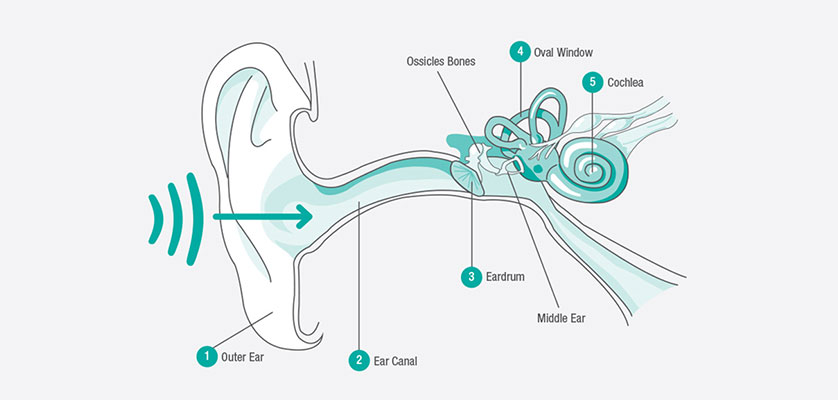

How You Hear - Ear Anatomy
I can hear but I can't understand, why? Most hearing loss occurs when the tiny hair cells in the inner ear bend or break. Physicians believe that prolonged exposure to loud noises and heredity are the main factors that contribute to hearing loss over time. Other causes of the damage can be related to: viral infections in the inner ear, medical treatments like chemotherapy and radiation, hear injury or age.
The sections of the ear
There are three major parts to the ear:
- outer ear - catches the sound waves and directs them into the middle ear.
- middle ear - the middle ear transfers sound waves in air into mechanical pressure waves that are then transferred to the fluids of the inner ear.
- inner ear (cochlea) - turns pressure waves into sound signals that our brain can understand.
To hear naturally, each part needs to work properly.
How natural hearing works
-
Sounds enter the ear canal
Sound waves move through the ear canal and strike the eardrum. -
The ear drum and bones of hearing vibrate
These sound waves cause the eardrum, and the three bones (ossicles) within the middle ear, to vibrate. -
Fluid moves through the inner ear
The vibrations move through the fluid in the spiral shaped inner ear – known as the cochlea – and cause the tiny hair cells in the cochlea to move. The hair cells detect the movement and change it into the chemical signals for the hearing nerve. -
Hearing nerves communicate to the brain
The hearing nerve then sends the information to the brain with electrical impulses, where they are interpreted as sound.
If you think you or your child have a hearing problem, please contact us at our Lake Havasu City, AZ office.
